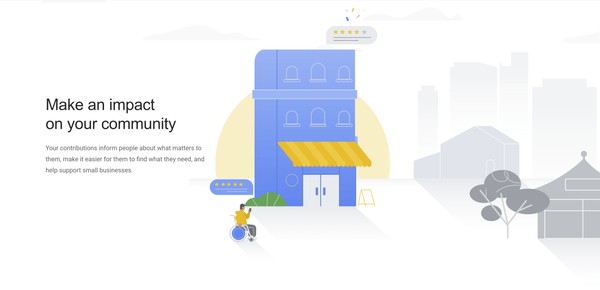The Google Local Guides program is a global community of explorers. They share knowledge, write reviews, post photos, verify facts, and update business listings on Google Maps. But What Is A Local Guide On Google really, and why should you consider joining?
Understanding Google Local Guides
The Local Guides program empowers individuals to contribute to Google Maps. They help users navigate their local neighborhoods and discover hidden gems.
Over a billion people use Google Maps monthly to find businesses and navigate. Keeping this information accurate and up-to-date is a massive task. Google constantly gathers data from street view cars, users, business owners, and satellite imagery. Google Maps users contribute approximately 20 million pieces of information daily!
Signing up as a Local Guide is a straightforward process.
Joining the Google Local Guides Program
Becoming a Local Guide is simple. Visit the Google Maps Local Guides website, sign up, and begin contributing. Share reviews and photos of the places you’ve visited. The more you contribute, the higher your Local Guide ranking.
Share your experiences, whether it’s recommending a special dish at a local restaurant, highlighting a secret spot, or suggesting the best place to watch the sunset. You can become a helpful tour guide and even promote your Instagram account in the process.
Perks and Benefits of Being a Local Guide
Google designed the Local Guides program for enthusiastic volunteers eager to share their local expertise and travel experiences.
As a Local Guide, you’ll earn points, badges, and other perks by sharing your knowledge and photos of local businesses. These contributions benefit future customers and boost online visibility for businesses.
Reaching level four unlocks your first Local Guides badge, increasing the visibility of your contributions. Google may also reward you with early access to new products, exclusive perks, and partner rewards. Some lucky guides are featured in promotional videos or invited to all-expenses-paid summits.
Earning Points and Badges as a Local Guide
People often trust consumer-generated reviews more than brand-generated content. When seeking a reliable plumber, a great restaurant, or a hidden gem, we often rely on the opinions and experiences of others.
The Local Guides program rewards participation with points, badges, and perks. These guides power the Google Maps ecosystem by providing accurate and current information, most of the time.
Google Local Guides uses a real-time gamification algorithm. The more you contribute, the more points and rewards you receive. You can also trade your points and badges with many Google partners. Earn points by contributing to Google Maps and badges by being active.
How to Earn Points, Badges, and Level Up
Local Guides can ask and answer questions, update place information, and review local businesses. Provide answers in local search information panels, leave reviews, add missing places, update information, and verify facts.
Each contribution earns a specific number of points. For example, uploading a photo earns five points. Leaving a detailed review of over 200 characters earns 10 points plus 10 bonus points. Accumulating points quickly leads to badges. You must earn 250 points to receive your first badge. Level ten, the super-star tier, requires 100,000 points!
Businesses understand that their customers are powerful brand ambassadors. User-generated content influences purchase decisions through product ratings, uploaded images and videos, questions and answers, and product ratings.
Potential Downsides: Gamification and Review Integrity
While Google Maps and Local Guides started with good intentions, some Local Guides are motivated by points and badges rather than a genuine desire to improve the Google ecosystem.
Gamification involves applying game mechanics to non-gaming situations. This technique makes everyday tasks fun and rewarding. Earning a badge for leaving a review is gamification. Collecting candy on Waze while driving is gamified!
Marketers use gamification to boost engagement and loyalty. Google Maps and Local Guides use this technique as well. However, the dopamine rush from Local Guides perks can encourage people to prioritize points over providing authentic and helpful contributions.
A higher Local Guide level increases trust. The pursuit of points may lead to negative reviews, low-effort answers, or fake photos. Although earned badges are not visible to the public, your level is, and this is what Google searchers trust.
Poor implementation has degraded the program’s value by lessening the integrity of the contributions. You can find short, sarcastic answers that have earned points, but are not helpful or accurate.
Trustworthiness of Local Guides: How to Evaluate
Unfortunately, not all Local Guides have the right intentions. While most contribute as intended, many businesses have received fake reviews or ratings that harm their reputation.
Scoring points and unlocking badges can be addictive, sometimes more so than providing honest reviews.
People searching for local businesses may trust Local Guide recommendations more. However, some badge holder reviews appear unrealistic.
The Local Guides program aimed to ensure Google Maps was a source of valuable, accurate, and helpful information. Sadly, there are increasing amounts of harmful reviews left by individuals who want to obtain a Local Guide badge.
To assess trustworthiness, check the guide’s profile to see if you recognize them. Look for fake accounts or attempts to game the system.
Protecting Your Business from Unfair Reviews
Is your business vulnerable to rogue Local Guides or competitors? Removing fake reviews can be challenging, but it’s possible.
The best defense is a strong offense. Proactively generate new reviews from your customers to your Google Business Profile. This builds trust and helps bury fake or negative reviews.
